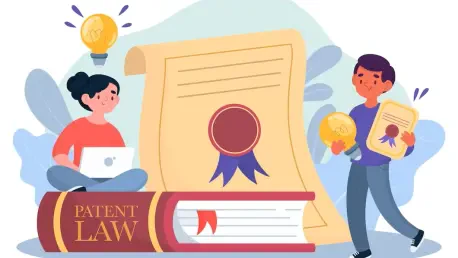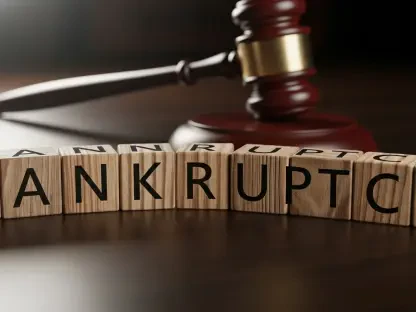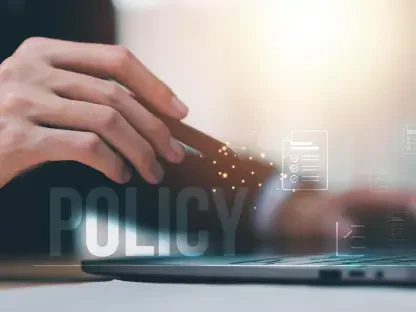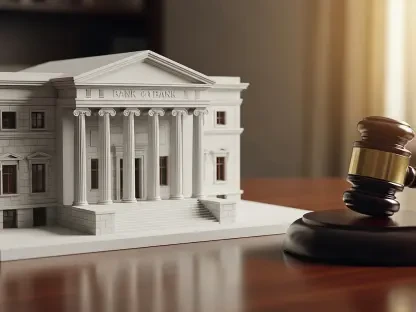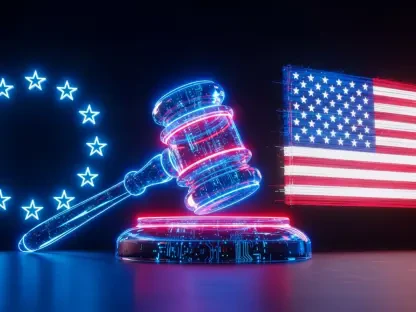Overview of a Landmark Patent Dispute
In the fast-evolving landscape of intellectual property law, a groundbreaking decision by the Unified Patent Court (UPC) has sent ripples through the technology and legal sectors across Europe, highlighting the delicate balance between protecting innovation and ensuring fair accountability. With patent disputes increasingly shaping competitive dynamics in industries like wireless technology, this recent ruling has become a focal point for understanding how legal frameworks adapt to modern challenges. This industry report delves into a significant case involving two major players in the tech arena, focusing on how the UPC’s Court of Appeal (CoA) has redefined critical aspects of patent infringement, online marketing liability, and personal accountability for corporate directors. This decision not only addresses immediate legal concerns but also sets a precedent that could influence how companies navigate patent enforcement in a digital age.
The technology sector, particularly in areas like wireless charging, remains a hotbed for innovation and contention, with patents often serving as both shields and swords in corporate battles. As businesses expand their digital presence, the risk of cross-border patent violations has surged, creating a pressing need for clarity in legal frameworks. This report examines how the UPC, as a centralized authority, is shaping the rules of engagement for patent holders and alleged infringers alike, offering insights into current trends and future implications for stakeholders across member states.
Case Background and Context
The dispute between Koninklijke Philips and Belkin entities, including Belkin GmbH, Belkin International Inc., and Belkin Limited, alongside named directors, marks a pivotal moment in UPC jurisprudence. Initiated at the Munich Local Division, the case centers on Philips’ patent EP 2 867 997, which covers inductive power transfer systems integral to the Qi wireless charging standard. This technology, vital for portable electronic devices, underscores the high stakes involved, as enforcement could impact market dynamics across multiple industries reliant on wireless solutions.
Philips sought extensive remedies, including injunctions, damages, and product recalls in several UPC member states, such as France, Germany, Italy, and the Netherlands. Belkin countered with a challenge to the patent’s validity, while prior national rulings, like a non-infringement decision from the Düsseldorf Regional Court in Germany, added layers of complexity to the proceedings. The involvement of individual directors in the lawsuit raised questions about personal liability, a contentious issue that the CoA ultimately addressed with a nuanced perspective.
This case’s significance extends beyond the immediate parties, as it tests the UPC’s ability to harmonize patent enforcement across borders while addressing modern challenges like digital marketing. The Munich Local Division initially found Belkin liable and held directors accountable as intermediaries, but the appeal process brought forth refined interpretations that could reshape legal strategies for tech firms operating in Europe.
Legal Framework of Patent Disputes in the UPC
Overview of UPC Jurisdiction and Authority
The UPC stands as a transformative force in European patent law, offering a centralized forum to resolve disputes across participating member states. Established under the UPC Agreement (UPCA), this court system aims to streamline litigation by providing uniform rulings, reducing the fragmentation seen in national courts. Its jurisdiction spans a wide array of patent-related issues, from infringement to validity challenges, ensuring that decisions have a cross-border impact.
This unified approach is particularly crucial in an era where technology transcends national boundaries, necessitating consistent enforcement mechanisms. The UPC’s authority empowers it to issue injunctions, damages, and other remedies that apply across multiple territories, a feature that distinguishes it from traditional national systems. As such, its rulings carry significant weight for multinational corporations navigating complex patent landscapes.
Key Provisions on Infringement and Liability
Central to the UPC’s legal arsenal are provisions from the European Patent Convention (EPC) and the UPCA, which define the scope of infringement and available remedies. Article 25(a) of the EPC, for instance, addresses acts of “offering” a patented product, a concept that has gained new dimensions in the digital age. Meanwhile, Article 63 of the UPCA outlines remedies like product recalls and destruction of infringing goods, emphasizing robust protection for patent holders.
These provisions also touch on liability, both corporate and personal, creating a framework where companies and their officers can be held accountable under specific conditions. The application of these rules often hinges on the nature of the infringement, whether it involves deliberate actions or negligence, and the extent to which individuals play a role in facilitating violations. Understanding these legal boundaries is essential for businesses seeking to comply with UPC mandates while minimizing exposure to litigation risks.
Core Issues and Court of Appeal Findings
Patent Validity and Infringement Interpretation
The CoA’s ruling affirmed the validity of Philips’ patent, focusing on the technical specificity of an “acknowledgment” signal within wireless charging systems. This signal, interpreted as a message indicating acceptance or rejection during negotiation phases, was deemed central to the patent’s claims, even if the transmitter lacked the practical ability to reject. Such a detailed construction underscores the court’s commitment to protecting nuanced technological innovations.
Equally significant was the court’s stance on infringement via online marketing, expanding the definition of “offering” under the EPC. By adopting an economic rather than strictly legal perspective, the CoA determined that Belkin’s promotion of Qi-compliant chargers on websites constituted an offer in UPC member states like Italy and France, regardless of whether direct sales or binding contracts were involved. This interpretation signals a broader reach for patent enforcement in digital marketplaces.
Director Liability: A Narrowed Scope
In a notable departure from the Munich Local Division’s broader approach, the CoA rejected personal liability for Belkin’s directors, setting a higher bar for accountability. The court clarified that holding a position of authority or managing corporate risks does not automatically implicate directors in a company’s infringing acts. Instead, liability requires evidence of deliberate misconduct or knowing inaction beyond standard professional duties.
This ruling provides a protective shield for corporate officers, ensuring they are not unduly targeted in patent disputes unless their actions directly contribute to infringement. The CoA also highlighted that reliance on legal advice could mitigate liability risks, at least until a first-instance infringement ruling is issued, offering a practical safeguard for directors navigating complex legal terrains.
Corrective Measures and Remedies
On the issue of remedies, the CoA upheld stringent measures as the default response to infringement, including product recalls, removal from distribution channels, and destruction of offending goods. Unlike the lower court, which denied a recall order, the appeal ruling emphasized that such actions are standard unless the infringer proves disproportionality or proposes feasible non-infringing alternatives. Belkin failed to meet this burden, resulting in the imposition of these remedies.
This decision reinforces the UPC’s focus on effective enforcement, ensuring that patent holders receive tangible relief from violations. It also places a significant onus on companies to justify why harsh measures should not apply, potentially increasing the stakes of litigation and encouraging preemptive compliance with patent laws.
Challenges in Cross-Border Patent Enforcement
The complexities of aligning UPC rulings with existing national decisions pose a substantial challenge for consistent patent enforcement. For instance, the Düsseldorf Regional Court’s prior non-infringement ruling in Germany limited the scope of UPC injunctions against specific Belkin entities in that territory, though relief in other member states remained unaffected. Such discrepancies highlight the friction between national and supranational legal systems.
Enforcing remedies across multiple jurisdictions adds another layer of difficulty, as varying legal traditions and procedural requirements can delay or dilute the impact of UPC orders. Companies must navigate these inconsistencies while ensuring compliance, a task that often requires significant resources and legal expertise to manage effectively.
Moreover, the digital dimension of infringement, particularly through online marketing, imposes a heavy compliance burden on businesses. Firms must monitor their web presence and promotional activities across UPC member states to avoid unintended violations, a challenge compounded by the borderless nature of e-commerce platforms and third-party marketplaces.
Regulatory and Legal Implications
The CoA’s expansive interpretation of “offering” through online platforms carries profound implications for digital commerce and patent enforcement strategies. By recognizing website promotions as actionable infringements, the ruling empowers patent holders to target violations in virtual spaces, aligning legal frameworks with the realities of modern business practices. However, it also compels companies to adopt stricter oversight of their digital content to prevent liability.
In limiting director liability, the UPC strikes a balance between safeguarding intellectual property and protecting corporate officers from excessive accountability. This approach ensures that enforcement remains robust without discouraging innovation or risk-taking by imposing undue personal risks on individuals, fostering a fairer litigation environment.
The interplay between national and UPC jurisdictions further shapes the evolving patent enforcement system in Europe. While respecting national rulings within their territorial limits, the UPC asserts broader authority over cross-border issues, paving the way for a more unified legal framework. This dynamic will likely influence how companies structure their operations and legal defenses in member states.
Future Outlook for UPC Patent Litigation
Looking ahead, this landmark ruling is poised to influence UPC cases involving online infringement and personal liability standards. The emphasis on digital marketing as a basis for infringement may prompt courts to further refine criteria for virtual offerings, potentially expanding the scope of actionable conduct in e-commerce settings over the next few years.
Corporate strategies are also likely to shift, with businesses prioritizing risk management and legal compliance to mitigate exposure to UPC litigation. Greater reliance on specialized legal advice could become standard practice, as firms seek to shield directors and ensure alignment with evolving patent enforcement norms across jurisdictions.
Emerging trends in UPC jurisprudence, such as a business-oriented focus on enforcement and cross-border remedies, suggest a trajectory toward practical, impactful resolutions. As the court continues to address modern challenges, its decisions will likely encourage innovation while ensuring that patent protections remain enforceable in an increasingly interconnected market landscape.
Final Reflections and Path Forward
The UPC Court of Appeal’s decision in this high-profile case marked a defining moment in the realm of patent law, offering clarity on intricate issues like online infringement, director accountability, and corrective remedies. It successfully balanced the need to protect intellectual property with the imperative to avoid overreaching liability, setting a thoughtful precedent for future disputes. The ruling also navigated the tensions between national and UPC jurisdictions, contributing to a more cohesive enforcement framework.
Moving forward, stakeholders are encouraged to adapt by enhancing digital compliance measures, ensuring that online marketing aligns with UPC standards to prevent unintended violations. Companies need to reassess internal policies on patent risk management, while directors benefit from clearer guidelines on personal exposure, prompting more informed decision-making. Patent holders, on the other hand, gain confidence in pursuing cross-border remedies, knowing that the UPC provides robust mechanisms for enforcement. This case ultimately underscores the importance of proactive legal strategies in safeguarding innovation within Europe’s dynamic patent landscape.
